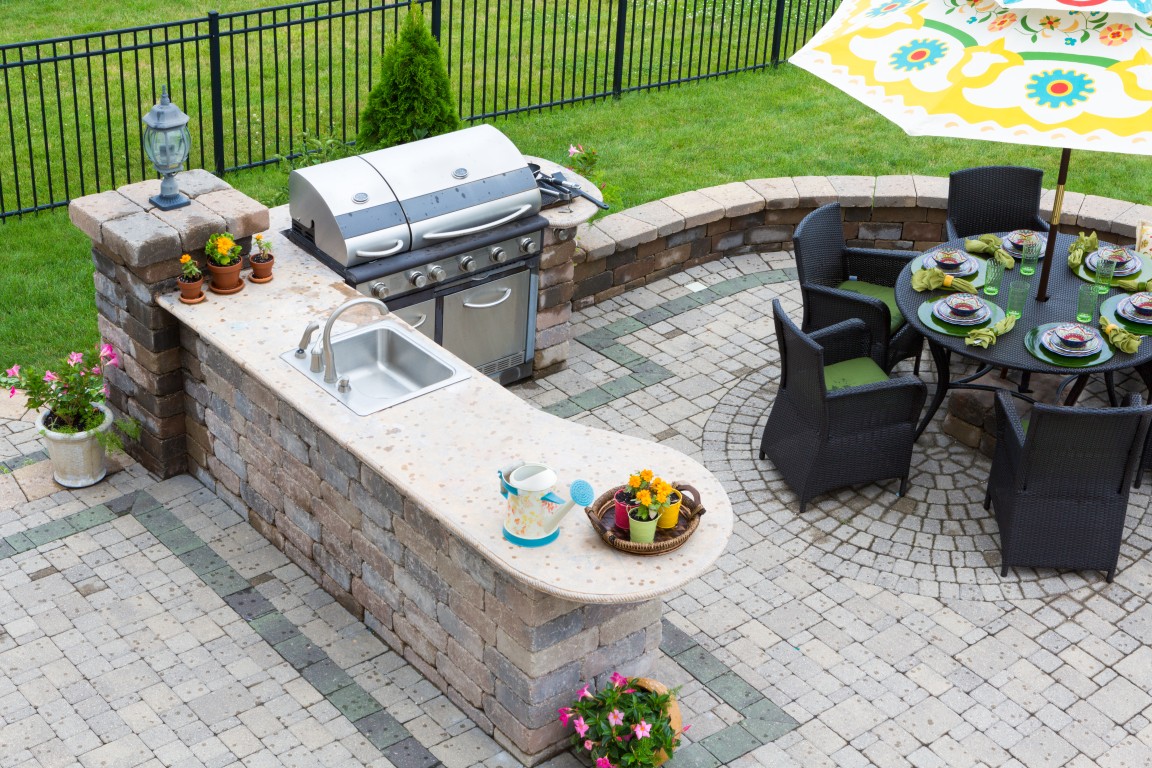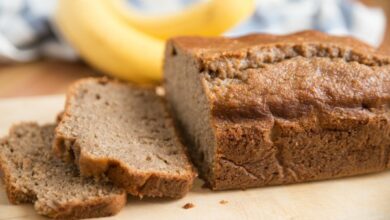
Over the course of the last year or so, many of us have started spending more time at home. While some states are lifting the stay-at-home orders, others are still restricting how many people can be in restaurants, bars and other establishments. With so much uncertainty surrounding our ability to go out and enjoy a drink or a meal with friends and family, many people have started creating their own entertaining areas.
Outdoor kitchens provide a great opportunity for you to get back to making memories with friends and relatives over a nice meal. Understanding how to design your outdoor kitchen will help you create a space that is functional, comfortable and stylish.
Getting a Head Count
Read More »Speaking of Planning…
It’s also important to consider the design elements of a good indoor kitchen when planning your outdoor kitchen. Professional kitchen designers point to the importance of hot areas, cold areas, wet areas and dry areas operating together when designing a functional indoor kitchen. Depending on how many appliances you plan on installing in your outdoor kitchen, you will need to create a design plan that allows for functionality. Most kitchen designers don’t put wet areas and dry areas directly beside one another. If you plan on building a fully functional outdoor kitchen, it’s important that you keep the way that different areas will be used in mind.
Low Maintenance Doesn’t Mean Low Quality
It’s important that you remember the fact that your outdoor kitchen is going to be outdoors. With that position, the appliances and furniture is going to be exposed to the elements. When you’re looking for pieces to fill out your outdoor dining area, make sure that you are choosing pieces that don’t require a lot of cleaning and are low maintenance. If your outdoor kitchen proves to be a constant source of work, you’ll be less likely to enjoy it long-term. Be sure that you’re picking appliances, furniture and lighting that can withstand the elements and won’t result in a lot of work for you.
Portable or Permanent?
If you’re living in a rental property or planning to move within the next year or two, you should probably set yourself up to be able to take your outdoor kitchen with you when you go. Additionally, many landlords don’t want tenants attaching permanent fixtures so you will need to plan accordingly. If you plan on leaving the home sooner than later, you’ll want to consider more temporary coverings and canopies instead of building permanent components of the outdoor kitchen. However, if you plan on being in the home for the long-term, you can start choosing textures and colors that compliment the exterior of your home in order to create a more permanent outdoor dining area.
Pick Your Roofing Structure
Depending on where you live, the type of roof that you put over your outdoor dining area will have a major impact on the overall look and feel of the area. If you’re in an area that doesn’t get much rain, you can go with no roof to save some money, or you can create a pergola to allow for hanging lights, plants and other design features. If the weather in your area is a little more inconsistent, you will want to ensure that you have some sort of covering over the kitchen. You don’t have to break the bank in order to build a permanent roof. Consider a heavy-duty cloth canopy that covers the entire area if you don’t want to construct a normal roof.
Consider Your Cooking Style
The type of food that you specialize in actually plays an important role in the kitchen that you build. Are you a grill master who serves up the best barbecue on the block? Your grill should be the focal point of your outdoor dining area. Maybe you fix the best brick oven pizza this side of Italy. If that’s the case, you should create a beautiful brick oven that will allow you to show off your skills. There are all kinds of different cooking appliances that you can set up in your outdoor dining area, so pick the one that lends itself to your particular cooking style.
Remember the Unseen Components
Running water, a source of power and a sewer line are all important parts of your outdoor kitchen. That means that you will need to consider where you put your outdoor dining area in order to have to do as little as possible to tie it into your home’s existing systems. You should also plan on turning over this portion of the process to a trusted professional. If you try to tap into your home’s existing plumbing system to run water to your kitchen, you can do some very expensive damage along the way. When you’re setting up a power source, whether you use electricity or gas, you could put yourself and your family in serious harm. There is a lot of the outdoor kitchen construction process that you can tackle on your own if you’re a DIY enthusiast but dealing with plumbing or electricity isn’t one of them.
Lighting Options
The size of your outdoor kitchen will play a major role in determining what type of lighting you need to install. If the area is smaller and you want to create a more intimate vibe, you may be able to get by with some tiki-torches (if your overall design lends itself to them) or some string lights that you can purchase at your local hardware store. If you’re looking for a more expansive outdoor dining area, you may want to consider equipping it with an overhead light.
Remember Storage
Finally, you should plan for some storage areas in your outdoor kitchen. Remember, the goal is to have a fully functional kitchen on the outside of your home. When you’re entertaining guests, you don’t want to have to keep running back and forth to your indoor kitchen to get the supplies that you need to prepare and serve dinner. Instead, make sure that your outdoor kitchen has enough cabinets and drawers to keep enough of the supplies that are required for a dinner party. Not only will this allow you to focus more on your guests, but you also won’t have to worry about making countless trips in and out of the house.
Depending on the size of the area you have available to you, how many people you plan on hosting, your cooking style and a few other factors, you can make your outdoor kitchen anything you want it to be. Outdoor dining areas provide a great chance for DIY enthusiasts to make a significant upgrade to their home. However, it’s crucial that you understand your own limitations and the safety ramifications that a full outdoor kitchen installation. When dealing with electricity or gas, you should always employ the services of a professionally licensed professional. Other than that, don’t be afraid to roll up your sleeves and make your outdoor kitchen a favorite spot for all of your friends and family members.





